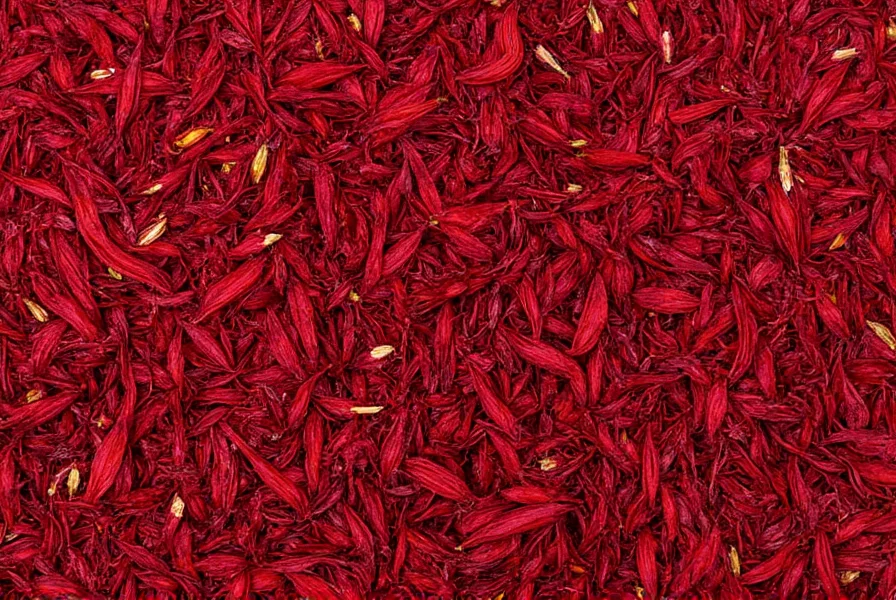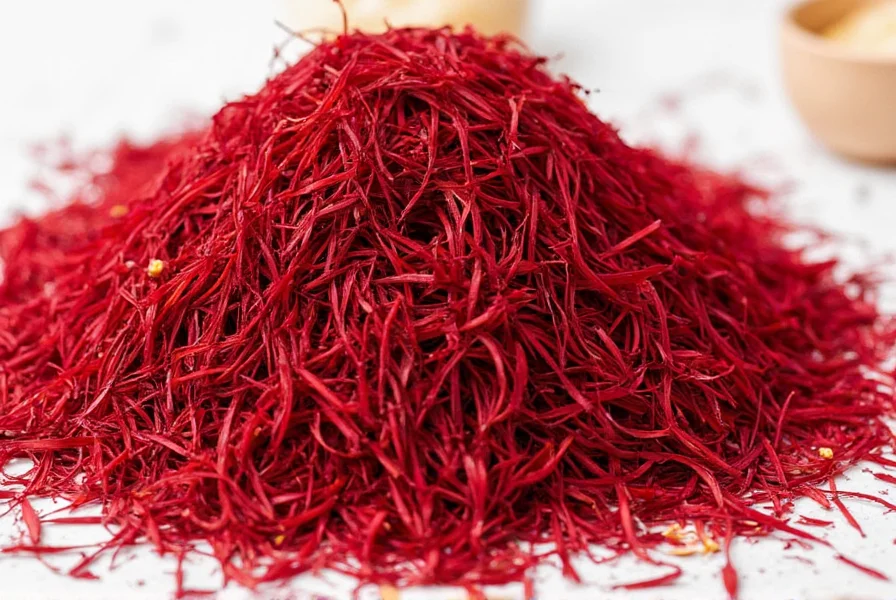Saffron's extraordinary price tag often surprises first-time buyers, but understanding the factors behind saffron cost reveals why this spice commands such premium pricing. Unlike most spices that can be mechanically harvested, saffron requires painstaking hand-picking of delicate crimson stigmas from Crocus sativus flowers. Each flower produces only three stigmas, and these must be harvested at first light when the blooms are still closed to preserve quality.
Why Saffron Commands Premium Pricing
The fundamental reason for saffron's high cost lies in its production process. Consider these critical factors:
- Labor intensity: It takes one skilled worker an entire day to harvest approximately 150,000 flowers to yield just one kilogram of fresh stigmas
- Seasonal limitations: The blooming period lasts only 2-3 weeks annually, typically in autumn
- Geographic constraints: Only specific climates support quality saffron cultivation, primarily Iran, Spain, and Kashmir
- Post-harvest processing: Stigmas require careful drying that reduces their weight by 80% while concentrating flavor compounds
When evaluating saffron cost, consumers should understand that genuine saffron cannot be cheap. Products priced significantly below $5 per gram likely contain fillers, artificial coloring, or inferior substitutes like safflower or turmeric. The global saffron market has maintained relatively stable pricing for decades because the production process hasn't changed substantially since ancient times.
| Measurement Unit | Low-Grade Saffron | Middle-Grade Saffron | Premium Saffron |
|---|---|---|---|
| Per gram | $5-$7 | $8-$12 | $13-$20 |
| Per ounce (28g) | $140-$196 | $224-$336 | $364-$560 |
| Per pound (454g) | $2,270-$3,178 | $3,600-$5,448 | $5,894-$9,080 |
Factors Influencing Saffron Market Price
Not all saffron carries the same price tag. Several quality determinants affect saffron cost:
Quality Grading System
Saffron is graded using ISO 3632 standards based on crocin (color), picrocrocin (taste), and safranal (aroma) content. Higher grades command premium pricing:
- Grade I (Coupe): Deep red threads with highest coloring strength (190+ on ISO scale) - most expensive
- Grade II (Mancha): Slightly less intense color (150-190 on ISO scale) - mid-range pricing
- Grade III (Rio): More yellow styles included, lower coloring strength (110-150) - most affordable
Geographic Origin Impact
Origin significantly affects saffron cost and value:
- Iranian saffron: Accounts for 90% of global production; offers best value with high quality at lower prices
- Spanish saffron: Often marketed as premium product; typically 20-30% more expensive than Iranian equivalent
- Kashmiri saffron: Rare and highly prized; commands 15-25% premium over Spanish saffron
- Greek and Moroccan saffron: Niche markets with moderate pricing between Iranian and Spanish

How to Evaluate Saffron Value
When assessing whether a saffron price represents good value, consider these practical guidelines:
- Color release test: Genuine saffron gradually releases golden-yellow color in warm water; fake products often discolor immediately
- Aroma assessment: High-quality saffron has a distinctive honey-like fragrance with hay notes; musty or absent aroma indicates poor quality
- Thread examination: Authentic saffron consists of trumpet-shaped red threads with slight yellow base; uniform red threads suggest dyeing
- Price reality check: Anything below $5 per gram likely contains fillers; prices above $20 per gram require exceptional quality justification
Understanding saffron cost per ounce versus cost per gram helps consumers make informed decisions. While bulk purchases reduce the per-unit price, they only represent value if you'll use the saffron before it loses potency. Saffron gradually loses its aromatic compounds, with optimal flavor lasting 6-12 months when properly stored in an airtight container away from light.
Historical Price Trends and Market Stability
Unlike many commodities, saffron pricing has remained remarkably stable over the past two decades. While inflation has affected most goods, saffron cost has increased at approximately half the rate of general inflation due to:
- Consistent production methods unchanged for centuries
- Limited expansion of cultivation areas
- Stable global demand from traditional markets
- Increasing competition among producing regions
This stability makes saffron an interesting case study in agricultural economics. Despite being the world's most expensive spice by weight, its price per culinary use remains reasonable. A single gram of premium saffron can flavor 20-30 servings of dishes like paella or risotto, translating to approximately $0.25-$0.50 per serving.

Practical Buying Guidance
When purchasing saffron, focus on value rather than simply seeking the lowest saffron cost. Consider these recommendations:
- Purchase whole threads rather than powder to verify authenticity
- Choose smaller quantities (0.5-1 gram) for occasional home use
- Look for packaging with ISO grading and harvest date information
- Store saffron in opaque, airtight containers away from heat and moisture
- Consider purchasing from reputable specialty spice merchants rather than general retailers
Understanding the genuine saffron cost structure helps consumers avoid both overpaying for inferior products and purchasing suspiciously cheap alternatives that likely contain fillers. The premium price reflects not just the spice itself, but the centuries-old tradition and meticulous craftsmanship required to produce this extraordinary culinary treasure.
Frequently Asked Questions About Saffron Cost
Why is saffron so expensive compared to other spices?
Saffron's high cost stems from its extremely labor-intensive harvesting process. It takes 75,000-250,000 crocus flowers to produce just one pound of dried saffron stigmas. Each flower must be hand-picked at first light, and each produces only three stigmas that require careful handling and drying. This intensive manual process hasn't changed significantly in centuries, making saffron the world's most expensive spice by weight.
How much should I expect to pay for quality saffron?
Quality saffron typically costs $5-$15 per gram. Premium grade saffron (ISO 3632 Grade I) usually ranges from $10-$20 per gram, while mid-grade (Grade II) falls between $8-$12 per gram. Anything significantly below $5 per gram likely contains fillers or is inferior quality. For home cooking, 0.5-1 gram portions are sufficient and should cost $3-$15 depending on quality.
Is expensive saffron worth the higher price?
Yes, premium saffron is generally worth the higher price. Higher quality saffron contains more crocin (color), picrocrocin (taste), and safranal (aroma) compounds, meaning you need less to achieve the same effect. Premium saffron also maintains its potency longer. While the upfront cost is higher, the cost per serving is often comparable or even lower than cheaper alternatives because you use less. Additionally, authentic saffron provides the distinctive flavor and color that makes dishes like paella truly exceptional.
How can I tell if saffron is priced fairly?
To evaluate if saffron is priced fairly, check for ISO 3632 grading information, examine the threads (should be deep red with slight yellow base), and perform a simple water test (genuine saffron gradually releases golden color over 15-20 minutes). Compare prices per gram rather than per package size. Prices below $5 per gram are suspiciously low for pure saffron. Reputable sellers provide harvest dates and origin information. Remember that Spanish saffron typically costs 20-30% more than Iranian saffron of equivalent quality.
Does saffron price vary by season?
Saffron prices remain relatively stable throughout the year despite its short harvest season (typically October-November). The drying and processing that follows harvest creates a consistent supply. However, newly harvested saffron from the most recent season may command a slight premium (5-10%) over older stock. Some specialty retailers offer newly harvested saffron at harvest time, but significant seasonal price fluctuations are uncommon in the saffron market due to careful inventory management by producers.










 浙公网安备
33010002000092号
浙公网安备
33010002000092号 浙B2-20120091-4
浙B2-20120091-4